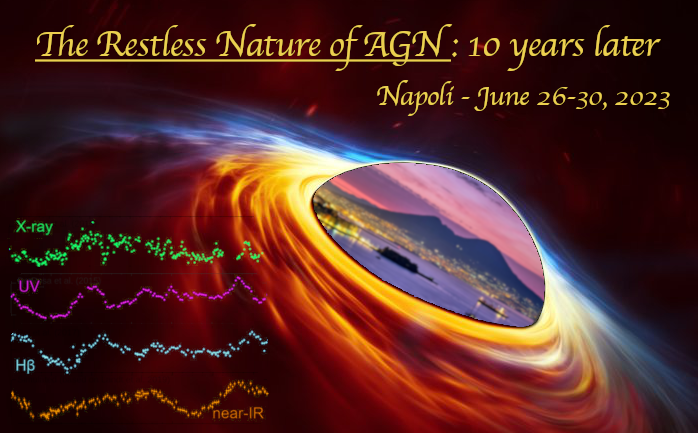Speaker
Description
We present spectroscopic and photometric observations of the changing look AGN
IRAS23226-3843. This object has previously been classified as a
changing-look AGN based on observations taken in the 1990s in comparison to
X-ray data (Swift, XMM-Newton, and NuSTAR) and optical spectra taken after
a very strong X-ray decline in 2017. In 2019, Swift observations revealed
a strong rebrightening in X-ray and UV fluxes. We took follow-up X-ray
observations of IRAS23226-3843 together with optical spectra from 2019 until
2021. IRAS23226-3843 showed a strong X-ray and optical outburst in 2019. It
varied in the X-ray continuum by a factor of 5 and in the optical continuum by
a factor of 1.6 within two months. The Balmer and FeII emission-line
intensities showed comparable variability amplitudes during the outburst in
2019. The Halpha emission-line profiles of IRAS23226-3843 changed from a
blue-peaked profile in the years 1997 and 1999 to a broad double-peaked
profile in 2017 and 2019. However, there were no major profile variations in
the extremely broad double-peaked profiles despite the strong intensity
variations in 2019. One year after the outburst, IRAS23226-3843 changed its
optical spectral type and became a Seyfert type 2 object in 2020.
A deep broadband XMM/NuSTAR spectrum was taken during IRAS23226-3843 maximum
state in 2019. This spectrum is qualitatively very similar to a spectrum taken
in 2017, but by a factor of 10 higher. The soft X-ray band appears featureless.
The soft excess is well modeled with a Comptonization model.

